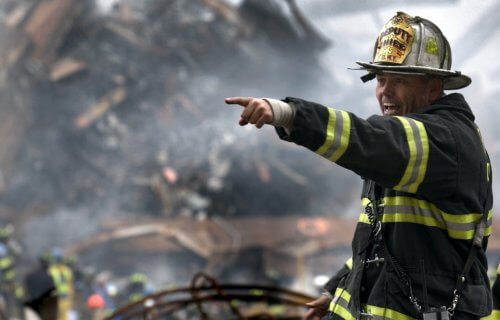COLUMBUS, Ohio — From pandemics to wildfires, Americans have seen more than their fair share of disasters in recent years. While everyone would like to be ready to deal with adversity, a new study finds many are unprepared for the worst-case scenario. Specifically, households led by women and Americans who rent apartments may be among the least prepared for the next natural disaster.
Researchers at The Ohio State University found that people in low socioeconomic communities are clearly the most at-risk group in the face of a major disaster such as a flood, a hurricane or wildfire. The study authors ultimately conclude that social workers, health care professionals, and people in emergency response positions should work with “socially vulnerable” groups who are “at least minimally prepared for disasters.”
Higher income property owners and people with a high level of confidence in their household’s emergency response plans were the most likely to be prepared for the country’s next major disaster.
The researchers focused on people who would be least likely to make it through three days without power or water, to gain access to reliable transportation, or to find supplies should they have to make an immediate evacuation. The team noted that Americans from all socio-economic subgroups should always have a “go bag with non-perishable foods, important medications, some emergency cash [and a] flashlight” in their household.
“It really is just the minimum. We should all have a ‘go bag’ with non-perishable foods, important medications, a flashlight and some emergency cash,” says lead study author Smitha Rao in a university release.
‘Disasters don’t affect everyone evenly’
Households with minors (children under 18), people who rent or lease property, and those who haven’t received recent emergency preparedness training at work were among the most vulnerable to disaster. Along ethnic and racial lines, African-American and Asian-American households were less likely than others to be “at least minimally prepared” for future disaster events, the researchers report.
The study authors note these at-risk groups need proactive measures taken in order to ensure they are not unprepared for the next disaster event. Low socioeconomic groups, they add, are always the most hurt by natural disasters.
“Disasters don’t affect everyone evenly,” Rao explains. “We need to find ways to help those who are most at risk of the consequences of disasters. Focusing on vulnerable groups, understanding their specific barriers, and connecting them to resources within the community are key strategies to ensure no one is left behind when disaster strikes.”
“Socially vulnerable groups that we found were less likely to be minimally prepared may also lack confidence in institutions that are supposed to help during disasters.”
The number of massive disasters keeps rising
The study also pointed at numerous factors tied to mental acuity and “socio-cognitive” preparedness. People who showed less confidence in their own personal ability to act during an emergency were less likely to act among the most minimally prepared for a disaster.
The Ohio State University and Boston College study, published in the International Journal of Disaster Risk Reduction, drew on 2018 Federal Emergency Management Agency National Household Survey data collected from a nationally represented sample of nearly 4,800 respondents.
Local county governments across the U.S. have Hazard Mitigation Plans (HMPs) and Comprehensive Emergency Management Plans (CEMPs). However, those disaster roadmaps typically require constant updates and often leave out some of the aforementioned minority groups within low socioeconomic communities.
The researchers note that 2020 and 2021 recorded back-to-back record highs for the number of billion-dollar disasters which struck the United States. In the 2010s, there were 123 separate billion-plus-dollar disasters in the U.S., compared to fewer than 30 in the 1980s.
“Confidence was an important aspect of being prepared. We can’t tell for sure from these data, but part of this may be how much confidence they have that government institutions will help them when necessary,” Rao concludes.

